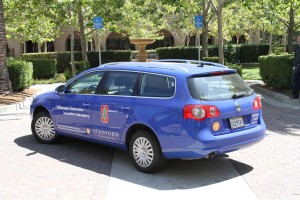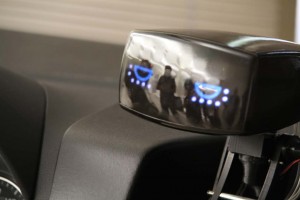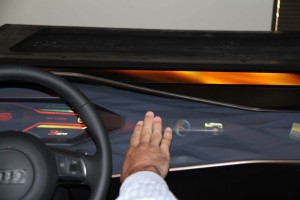The sedan sweeps into the parking lot and makes a beeline for an open spot, coming to a halt only briefly before backing into place behind the non-descript office complex in the heart of Silicon Valley.
Nothing unique about that, you might think – until you realize there’s no one behind the wheel of the little blue wagon. That’s because it is a Volkswagen prototype designed to park itself autonomously.
“How nice would it be,” asks VW research engineer Dirk Langer, “if you could get the entrance of a parking lot, push a button, get out of the car and let it find a spot for itself? When it’s time to come back, you would just call the car on your cellphone and it would be waiting for you.”
While a number of makers – including VW – already offer parking assistance systems, it’s likely to be at least a few years before a completely autonomous car comes to market. Not that Volkswagen isn’t trying. The maker’s Electronic Research Lab, or ERL, in Palo Alto, California, helped develop the fully autonomous car, nicknamed Stanley, which won the DARPA Challenge, several years ago.
But teaching cars to drive on their own is only one of the goals of the ERL, which is working on projects as varied as touch screen displays that can cover the entire instrument panel, navigation systems that can provide actual images of the road you’re driving on, and a robot co-pilot who expresses pleasure – or anger – with the way you’re driving.
The ERL, with its 83 full-time and contract employees, was set up in Palo Alto because that’s “where there’s a focus on risk-taking,” explains manager Chuhee Lee. “We’re looking to take the …out-of-the-box…ideas of Silicon Valley and apply it to the automotive sector,” which isn’t know for responding with anywhere the speed and flexibility of high-tech companies like an Apple or Google.
The lab is focusing on four key areas of research:
- Connected vehicles, which can talk to each other or the infrastructure to improve safety, reduce fuel consumption – and can drivers in touch with the world around them;
- Human Machine Interface, technology designed to make it easier and safer for motorists to operate a vehicle;
- Driver Assistant Systems, like the autonomous parking technology; and
- eMobility Development, which VW hopes will make it easier and more affordable to put battery-based vehicles on the road.
During a recent tour of the ERL, VW showed off several ongoing projects, including Google Earth Navigation. This takes current navi systems a step further by providing actual Google-sourced images on a vehicle’s navigation display, providing the motorist a more accurate feel for the road.
The technology recently made its debut on the European version of the Audi A8 and will soon migrate to the A6. Plans call for it being offered in the U.S., as well, “hopefully sometime next year,” said Lee. It would likely become a no-fee feature of VW’s Connectivity Package, but would require a user to have a data plan on their cellphone, downloading images via Bluetooth.
DAVE isn’t a member of the ERL staff, but a prototype, touch-sensitive instrument panel that is, effectively, all display. Images can be made to pop up just about anywhere, with conventional knobs and switches replaced by touch-screen controls.
“You’d be able to interact by touch and completely personalize it,” said ERL engineer Luis Sanpedro Diaz of DAVE, which stands for Digitally Augmented Vehicle Experience.
VW is betting the system will be available in the reasonably near-term future, though it is still searching for the right display technology, which could include organic LEDs, or even display paper.
AIDA, meanwhile, might someday apply for a job at the ERL. She certainly has the attitude of a manager, though for the moment she is mute. Instead, this instrument panel-mounted robot has a somewhat human-like face that can display a wide range of emotions by winking, frowning, smiling or blinking.
“It laughs, it cries,” and like an overbearing mother, said Diaz, and the Affective Intelligence Driver Application can nudge a motorist to take the appropriate actions behind the wheel or, perhaps, ease off when in the grips of road rage.
The eMobility lab is working with a variety of technologies that could transform the car of the future, including high-efficiency solar cells. But the primary focus is on battery power, something VW intends to use in a number of future vehicles. That includes the eUP, an electric version of its European UP microcar and a production version of the Audi eTron sports car.
As with many of the research labs in Silicon Valley, there’s an almost whimsical nature to much of what goes on in the ERL, such as AIDA, but there’s plenty serious technology, as well, that will likely make it into production in the years ahead.



